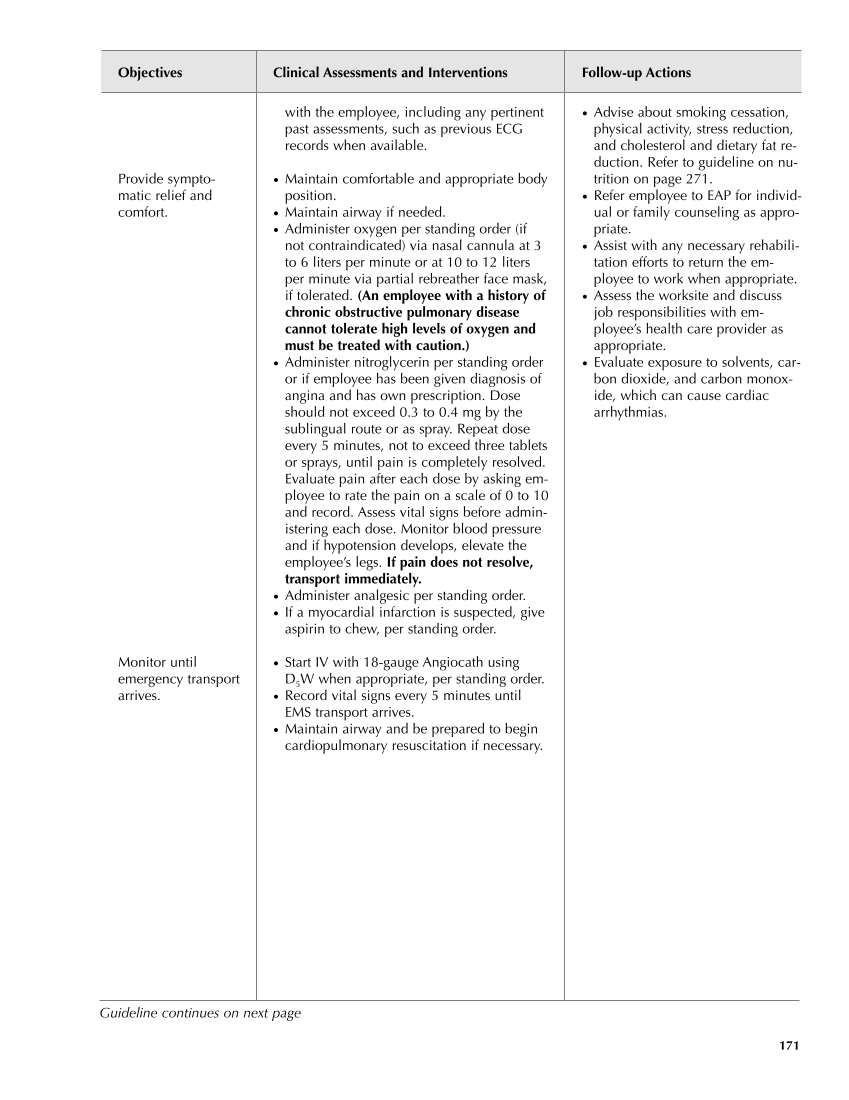● Advise about smoking cessation, physical activity, stress reduction, and cholesterol and dietary fat re- duction. Refer to guideline on nu- trition on page 271. ● Refer employee to EAP for individ- ual or family counseling as appro- priate. ● Assist with any necessary rehabili- tation efforts to return the em- ployee to work when appropriate. ● Assess the worksite and discuss job responsibilities with em- ployee’s health care provider as appropriate. ● Evaluate exposure to solvents, car- bon dioxide, and carbon monox- ide, which can cause cardiac arrhythmias. Objectives Clinical Assessments and Interventions Follow-up Actions 171 Provide sympto- matic relief and comfort. Monitor until emergency transport arrives. with the employee, including any pertinent past assessments, such as previous ECG records when available. ● Maintain comfortable and appropriate body position. ● Maintain airway if needed. ● Administer oxygen per standing order (if not contraindicated) via nasal cannula at 3 to 6 liters per minute or at 10 to 12 liters per minute via partial rebreather face mask, if tolerated. (An employee with a history of chronic obstructive pulmonary disease cannot tolerate high levels of oxygen and must be treated with caution.) ● Administer nitroglycerin per standing order or if employee has been given diagnosis of angina and has own prescription. Dose should not exceed 0.3 to 0.4 mg by the sublingual route or as spray. Repeat dose every 5 minutes, not to exceed three tablets or sprays, until pain is completely resolved. Evaluate pain after each dose by asking em- ployee to rate the pain on a scale of 0 to 10 and record. Assess vital signs before admin- istering each dose. Monitor blood pressure and if hypotension develops, elevate the employee’s legs. If pain does not resolve, transport immediately. ● Administer analgesic per standing order. ● If a myocardial infarction is suspected, give aspirin to chew, per standing order. ● Start IV with 18-gauge Angiocath using D5W when appropriate, per standing order. ● Record vital signs every 5 minutes until EMS transport arrives. ● Maintain airway and be prepared to begin cardiopulmonary resuscitation if necessary. Guideline continues on next page
Purchased from OEM Press by (ge corporate access). (C) 2013 OEM Health Information, Inc. All rights reserved.












































































































































































































































































































































































































































